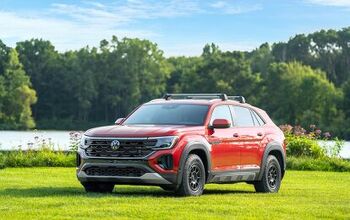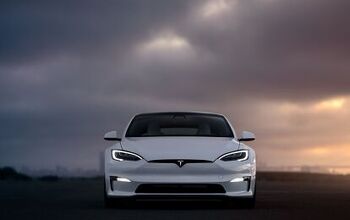Piston Slap: Will EVs Bankrupt Mechanics, Dealerships?

Marc writes:
Hi. Long-time reader, and have had a past question answered. With all the hype surrounding electrification, there is one aspect I see little discussion about — the impact on the service and parts business. If the majority of profits at a dealership comes from service and parts, what is the impact of no oil changes, etc, and the myriad of ICE parts that electric vehicles don’t have? Jiffy Lube, Aamco, Midas, all done.
The economic implications are huge. Your thoughts?
Sajeev answers:
This is where I give the standard speech that my full time corporate gig is in the auto retailing side of things, so you outta take my thoughts with a grain of salt.
Anyway, let’s be realistic about maintenance and repairs on EVs. While the likes of specialty places like Jiffy Lube shall see a contraction (or an unlikely death), Auto Dealerships/Repair shops don’t make a living on oil changes. Considering the number of $29.99/$19.99/$9.99 oil change coupons I see floating around online and in direct mail pieces, the game here is to get cars in the service bays to look for problems (via free multi-point inspection) while the oil drains out/tires get rotated.
Taking a scope to the brake calipers (measuring pad thickness), checking for play in suspension bits, looking for leaks, etc, is where you make the profits that keep the lights on. This will not change if/when EVs dominate the market, because most EVs possess cooling systems that are complicated works of art and require periodic attention. From the Tesla forums, the Model S recommends annual servicing to the tune of $600, though commentator Rocky_H notes, “the (required) 2 year service is $700 and the 4 year service is $900, and then the cycle repeats.” That post has another gem from dd.micsol:
“This is very high maint costs if you think about it. If you get a new ICE you won’t do anything but oil changes for the first 3 yrs. So about 5 oil changes or about 150 bucks.”
He’s got a point, irrelevant if people actually embraced the low maintenance, air-cooled Nissan Leaf. But nobody(ish) in North America wants a practical EV, so forget it! On to the next point: suspension wear.
Electric cars are oh-so-heavy, often run on big wheels with low profile tires, and our infrastructure is generally crummy and motorists rarely avoid every bump in the road. Peep these curb weights:
- 2020 Nissan Leaf: 3,538 – 3,946 lbs
- 2020 Chevy Bolt: 3,563 lbs
- 2020 Nissan Sentra: 3,045 – 3,084 lbs
- 2020 Audi E-Tron: 5,754 lbs
- 2020 Porsche Taycan: 4,777 to 5,132 lbs
- 2020 Tesla Model S: 4,883 to 4,941 lbs
- 2020 Mercedes S-class: 4,553 to 5,296 lbs
- 2011 Lincoln Town Car: 4,352 to 4,467 lbs
You’d be forgiven for thinking the Town Car’s high center of gravity (among other things) make it feel much heavier than a Model S. It’s a safe bet that inertia-laden Teslas have more R&D money invested in a (relatively) featherweight suspension with low amounts of unsprung weight. Both the Model S and 3 handle so amazingly well for their sizes, they must have a light suspension relative to their gross vehicle weight rating (which is nearly 6,000 lbs)!
Because you can’t have a tough suspension that handles like a race car…you gotta pick one!
Since Tesla is leading the charge (sorry) on North American electrification, odds are they know the truth about suspension design for an electrified chassis. We will never know their truth, but it’s fair to note Tesla’s history of denying suspension problems when customers drive their luxury barges on bad roads, break stuff, and sometimes make owners sign confidentiality agreements. If it allegedly happened to a Hollywood star, it can theoretically happen to anyone, right?
What’s the point? Once more automakers/people get on the EV bandwagon, more data will likely show that EVs need mechanical attention in the aforementioned ways, and many shall be pricey. So mechanics and dealerships shall still win, because the multi-point inspection shall save some bacon.
[Image: Lucid Motors]
Send your queries to sajeev@thetruthaboutcars.com. Spare no details and ask for a speedy resolution if you’re in a hurry…but be realistic, and use your make/model specific forums instead of TTAC for more timely advice.

More by Sajeev Mehta
Latest Car Reviews
Read moreLatest Product Reviews
Read moreRecent Comments
- ToolGuy TG grows skeptical about his government protecting him from bad decisions.
- Calrson Fan Jeff - Agree with what you said. I think currently an EV pick-up could work in a commercial/fleet application. As someone on this site stated, w/current tech. battery vehicles just do not scale well. EBFlex - No one wanted to hate the Cyber Truck more than me but I can't ignore all the new technology and innovative thinking that went into it. There is a lot I like about it. GM, Ford & Ram should incorporate some it's design cues into their ICE trucks.
- Michael S6 Very confusing if the move is permanent or temporary.
- Jrhurren Worked in Detroit 18 years, live 20 minutes away. Ren Cen is a gem, but a very terrible design inside. I’m surprised GM stuck it out as long as they did there.
- Carson D I thought that this was going to be a comparison of BFGoodrich's different truck tires.


































Comments
Join the conversation
Assuming no government bans on ICE---the future will be a mix of ICE, hybrids, electric, diesel, natural gas and possible fuel cell/hydrogen. Crazy thought: for some people ICE is better, for others plug-in electric. Now if the US goes full "soda ban" on new ICE cars---OEMs will seal those powertrains, guaranteed third/4th-hand electric cars will not be affordable to lower incomes (end-of-life battery failures); many chains with inconsistent quality will go out of business, the whole industry will get squeezed, dealers will thin out until only the strong balance sheets survive; many people will just throw their hands up and choose or be forced to use Uber-Lyft-whatever else whether or not there's a robot behind the wheel
Go broke ? Hardly. You underestimate the ability of car makers to design in planned obsolence. There is no reason your car today can't run 250k reliably, save wear parts like tires shocks and brakes...and shocks and brakes could be designed to last a lot longer than they do. The current leading edge cars are expensive, mostly and aimed at a buyer who can afford an experiment. They aren't yet mass market. When they do, you will be sure the batteries will last X time. The motors won't be forever, no matter what you have today...stuff will wear. A car is a financial instrument. The cost to buy, the cost to keep running, the cost after warranty, are all well planned and calculated. Some car makers go longer, like Honda or Toyota, some go shorter (first owner only) like GM or Chrysler, but they all have an average lifespan for part like alternators or fuel pumps. Some cheap wheel bearings or alternators can easily be hidden in the car, as bombs for the second owner-saves pennies, produces huge knock on effects- Electrics will eventually be mass, and the costs will also be per marketing, not engineering. No one changes points any more, but the OBD-2 sends more people in than points ever did. Once the ultimate battery is designed, someone will shave pennies from it, and at 200k, you may expect to re-power the car....or buy new.